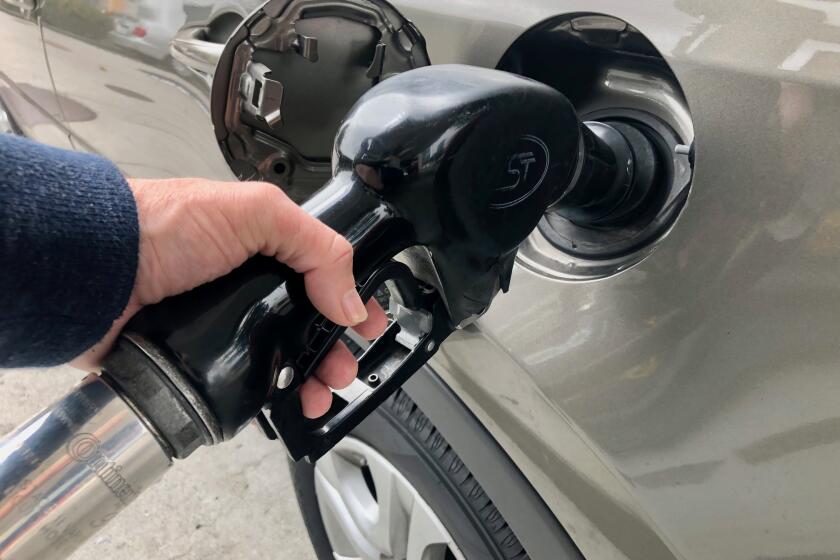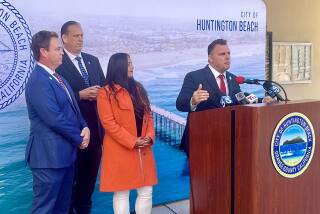
Nine years ago, when an aging oil pipeline ruptured near the coast of Santa Barbara County, an inky darkness spread over the waters. The massive slick of oil engulfed and killed hundreds of marine animals, including, seals, dolphins and pelicans. And the acrid smell of petroleum polluted the coastline’s air.
On May 19, 2015, a corroded section of an oil pipeline burst and released more than 140,000 gallons of oil near Refugio State Beach. The incident — which revived memories of a massive 3-million-gallon spill almost 50 years earlier — sullied some of the state’s most pristine beaches and a rare stretch of undeveloped coastline. Oil migrated as far away as Orange County, closing fisheries and costing hundreds of millions of dollars to clean up.
Soon after the spill, Exxon Mobil halted operations at its three offshore oil platforms while Plains All American Pipeline idled the connected pipelines. This year, Sable Offshore Corp., a Houston-based energy company, purchased the mothballed equipment and announced plans to restart oil extraction by the end of the year — including the failed pipeline.
Aggressive and impactful reporting on climate change, the environment, health and science.
Most recently, the California Coastal Commission has repeatedly admonished the company for performing unauthorized work on the pipeline in an attempt to ready the equipment for transporting oil. This week, environmentalists carrying homemade signs and a large banner reading “Fight Offshore Drilling” protested at a commission meeting in San Diego.
The potential restart and accelerated pace of construction have heightened fears of another catastrophic oil spill.
Environmental groups contend that federally mandated corrosion protection was not effective on the 30-year-old pipeline, and say it will never perform safely. Also, when Santa Barbara County considered a plan to build a new pipeline, an environmental report estimated that the existing line could suffer a spill every year, and a major rupture every four years. These releases, it concluded, could result in a disaster even larger than the 2015 spill.
“It’s just old and corroded, so it feels like a ticking time bomb to continue letting this infrastructure operate and to restart it after such a severe spill without additional environmental review,” said Julie Teel Simmonds, senior counsel for the Center for Biological Diversity. “It seems too risky to even contemplate.”
In the nine years since the spill, the damaged pipeline was “evacuated, cleaned and preserved with inert nitrogen to maintain a corrosion-free state,” according to Steve Rusch, Sable’s vice president of environmental and regulatory affairs. He said work crews have already started the process of repairing about 100 “anomalies” — areas of corrosion, cracks or other defects — to ensure that the pipeline will be in an “as-new” condition.
New mothers are more likely to suffer depression if they are exposed to certain types of air pollution in the second trimester of pregnancy, researchers say.
Residents and environmental groups have complained the permitting process has moved ahead with little to no public involvement and insufficient environmental reviews.
The project still needs to obtain clearance from several regulatory agencies before it can start. However, perhaps one of the most pivotal steps is a waiver and approvals from the Office of the State Fire Marshal, which oversees pipeline safety. Thirteen California lawmakers, including state Sen. Monique Limon (D-Santa Barbara), wrote a letter to the California Department of Forestry and Fire Protection to express concerns about the project and ask for more transparency about the decision-making process.
“We understand that OSFM is scheduling a public hearing in mid-October, but we have heard concerns that this could be after a determination of the state waiver, which would allow for the functional restart of the pipeline with no opportunities for public participation,” Limon and others wrote. “We believe it would be helpful to invite public review and comment on the available information before any decision is finalized.”
The Environmental Defense Center, borne out of the 1969 oil spill near Santa Barbara, is advocating for the fire marshal to deny the necessary permits.
“Our hope is that the state sees this as a public safety issue as well as a serious environmental threat, and shuts it down,” said Alex Katz, executive director of the organization. “We don’t think there’s any way that this pipeline can be safely operated. It poses an unacceptable risk to our community and we would hope that the fire marshal ultimately denies the state waiver. But it’s hard to weigh in on it without having seen the documents.”
Three oil platforms — the Hondo, Harmony, and Heritage — make up the Santa Ynez Unit, several miles offshore in the Santa Barbara Channel. An underwater pipeline carries oil to the Las Flores Canyon processing facility. Then, two pipelines carry oil from the facility to Kern County.
Exxon Mobil has touted ‘advanced recycling’ as a groundbreaking technology that will turn the tide in the plastic crisis. California says it’s a lie.
In May 2015, one pipeline ruptured and gushed oil into a culvert under Highway 101 and eventually discharged into the Pacific Ocean. The emergency response was notably delayed as Plains All American reported the hazardous spill several hours after it occurred.
“The beach filled with this really thick — almost pudding-like — black oil,” said Linda Krop, chief counsel of the Environmental Defense Center. “And every lap of the waves would deposit more on the beach. And it was so frustrating to be standing there watching and knowing that nothing was being done.”
A Santa Barbara County Superior Court jury found Plains All American guilty on multiple criminal counts, including the failure to maintain its highly pressurized pipeline — a felony. California also adopted stricter requirements for oil pipelines, including more frequent inspections and automatic shutoff valves to quickly halt oil flow in the event of a rupture.
Exxon Mobil later proposed transporting oil via trucks, a plan that was rejected by Santa Barbara County. Exxon Mobil purchased the Plains All American pipelines in an effort to rebuild and restart them. But it later agreed to sell the Santa Ynez Unit platforms and pipelines to Sable in 2022.
Last November, Sable sued Santa Barbara County for denying its permits to install automatic safety valves, a critical requirement for operations to begin. Facing potential financial losses, the county settled the lawsuit by acknowledging it lacked jurisdiction to decide such permits.
Sable began work installing safety valves and making repairs. When residents and environmental groups noticed, they alerted the California Coastal Commission, which regulates construction in a coastal zone.
Teel Simmonds said activists considered it a victory when the trucking proposal was rejected, but what is being proposed now is more alarming.
“What has reared its head seems even scarier in ways,” she said. “They’re proposing not to build a new pipeline, but instead to restart this failed, corroded system that has already outlived its expected life. This has happened quietly, largely behind closed doors. Many agencies are looking at different angles of this, but it seems that no one has ever had even one public hearing on this restart proposal.”
In September, the coastal commission learned about unpermitted work on the pipeline near the coast. It issued a violation notice on Sept. 27 and warned the company to stop. A week later, passersby reported seeing continued work, prompting the coastal commission to send Sable a cease-and-desist order.
As Gov. Gavin Newsom urges new controls on state oil refineries, California air regulators are considering new rules that could increase gas prices.
Rusch, the Sable vice president, said the company has removed all crews from the coastal zone. He said the company believes that its repair and maintenance activities are exempt from Coastal Act permitting requirements, and such activities have been conducted on the pipeline under existing permits for the last 35 years.
But the Center for Biological Diversity and the Wishtoyo Foundation sent a letter to the U.S. Department of the Interior threatening to sue if Sable is not required to submit updated development plans for its oil and gas leases.
Environmentalists say that while the crescent-shaped coastline of Refugio State Beach looks clean today, the ecosystem is still recovering.
“Nothing really can remediate damage from oil spills,” Teel Simmonds said. “The costs are seen and unseen. We’re still suffering from the results of spills that happened years ago.”











